The 1959 Franklin half dollar contains 90% silver and is worth approximately $13 in very fine condition, with value primarily based on silver content. Coins marked “D” were minted in Denver, while those without a mint mark came from Philadelphia. Unlike Kennedy half dollars, no major documented errors exist for 1959 Franklin halves that significantly increase value. Both D-mint and no-mint mark versions are common, with minimal value difference between them. Better condition specimens may command slightly higher prices, but the mint mark location doesn’t substantially affect worth for these readily available coins.
Finding a 1959 half dollar in your collection might spark questions about its worth. These Franklin half dollars, minted during the final years of this iconic series, carry both numismatic interest and intrinsic silver value. Understanding the difference between Philadelphia and Denver issues, recognizing potential errors, and knowing what collectors pay for various grades can help you accurately assess what your coin is worth in today’s market.
Understanding the 1959 Franklin Half Dollar
The 1959 Franklin half dollar represents one of the last years of production for this series, which ran from 1948 to 1963 before being replaced by the Kennedy half dollar. Each coin contains 0.36169 troy ounces of pure silver, as they were struck in 90% silver composition with 10% copper. This precious metal content alone gives every 1959 half dollar a baseline value that fluctuates with silver prices.
The United States Mint produced these coins at two facilities in 1959. The Philadelphia Mint struck 6,200,000 pieces without any mint mark, while the Denver Mint produced 13,053,750 coins bearing a “D” mint mark on the reverse, located above the Liberty Bell between the letters “E” and “S” in “STATES.” Both mintages are considered common in numismatic terms, making these coins readily available to collectors.
John R. Sinnock designed both sides of the Franklin half dollar. The obverse features a right-facing portrait of Benjamin Franklin, while the reverse displays the Liberty Bell with a small eagle to the right, included to satisfy the legal requirement that all half dollars feature an eagle.
Current Market Values by Grade
The value of a 1959 half dollar depends primarily on its condition and the current silver spot price. Here’s what these coins typically sell for across different grades:
| Grade | 1959 (No Mint Mark) | 1959-D |
|---|---|---|
| Good (G-4) | $11-12 | $11-12 |
| Very Fine (VF-20) | $13-14 | $13-14 |
| Extremely Fine (EF-40) | $14-15 | $14-15 |
| About Uncirculated (AU-50) | $15-17 | $15-17 |
| Mint State (MS-60) | $18-22 | $18-22 |
| Mint State (MS-63) | $25-30 | $25-30 |
| Mint State (MS-65) | $65-85 | $70-90 |
These prices reflect current market conditions with silver trading around $23-25 per ounce. The melt value alone sits at approximately $9.50 to $10.50, establishing a floor price regardless of condition. Circulated examples in Good through Extremely Fine condition typically sell for $11 to $15, representing a modest premium over silver content.
Uncirculated specimens command higher prices, with gem quality MS-65 examples reaching $65 to $90 depending on eye appeal and strike quality. Coins graded MS-66 or higher by professional services like PCGS or NGC can exceed $150, though such premium grades remain scarce for this issue.
Philadelphia Versus Denver Production
The mint mark location makes identification straightforward. Turn the coin to the reverse side and examine the area above the Liberty Bell. A small “D” indicates Denver production, while the complete absence of any mark confirms Philadelphia origin.
Despite the significant difference in mintage numbers, with Denver producing more than double Philadelphia’s output, this disparity doesn’t translate into meaningful value differences. Both varieties remain common enough that collectors pay essentially identical prices for comparable grades. A MS-63 Philadelphia coin sells for roughly the same amount as a MS-63 Denver piece.
The similarity in value stems from survival rates. Even though Philadelphia struck fewer coins, millions survive in all conditions from both mints. Neither variety experienced the melting or attrition that creates scarcity premiums seen in other coin series.
Collectors building Franklin half dollar sets need both varieties to complete the 1959 date, but neither poses a challenge to acquire. Coin dealers typically stock both versions, and they appear regularly at coin shows, online auctions, and through bullion dealers.
Examining the Error Landscape
Unlike the 1964 Kennedy half dollar series, which features several well-documented and valuable error varieties, the 1959 Franklin half dollar lacks major recognized errors that command significant premiums. No famous doubled dies, repunched mint marks, or overdates exist for this date.
This doesn’t mean errors don’t exist. Any coin can exhibit manufacturing anomalies, and collectors should examine their 1959 half dollars for these potential varieties:
Planchet errors occur before the coin is struck. These include clipped planchets, where part of the blank metal disc is missing, creating a coin with an incomplete edge. Lamination errors, where the metal separates in layers, can also occur. These typically add $25 to $100 to a coin’s value depending on severity and eye appeal.
Strike errors happen during the minting process. Off-center strikes, where the design doesn’t align properly with the planchet, create dramatic visual errors. A 1959 half dollar struck 10% off-center might bring $75 to $150, while 50% off-center examples can reach $300 or more. Broadstrike errors, where the coin spreads beyond its normal diameter due to a missing collar, typically add $40 to $80.
Die errors result from damage or issues with the dies themselves. Die cracks, die breaks, and cud errors create raised lines or lumps on the finished coin. Minor die cracks add modest premiums of $5 to $15, while major cuds can bring $50 to $150. However, no major published die varieties exist for 1959 specifically.
Finding genuine errors requires careful examination. Use a magnifying glass or loupe to inspect all design elements. Compare your coin to images of known errors online or in reference books like the Cherrypickers’ Guide to Rare Die Varieties. If you believe you’ve found a significant error, consider professional authentication through PCGS or NGC.
Factors That Influence Premium Pricing
Beyond basic grade, several factors can push a 1959 Franklin half dollar toward the higher end of its price range or even above typical values.
Full Bell Lines represent the most important quality marker for Franklin half dollars. The reverse shows horizontal lines across the lower portion of the Liberty Bell. On many specimens, these lines appear weak or absent due to die wear or weak strikes. Coins displaying complete, sharp bell lines throughout receive the FBL designation from grading services. A 1959-D graded MS-63 FBL might sell for $45 to $60, compared to $25 to $30 for a non-FBL example of the same grade.
Toning and eye appeal matter significantly for uncirculated coins. Franklin half dollars often develop attractive rainbow toning when stored in paper or cardboard holders over decades. Coins with exceptional color can command 20% to 50% premiums over white, untoned examples. Conversely, spotted or unevenly toned coins may sell at discounts.
Strike quality varies even within the same grade. Some 1959 half dollars show sharp, crisp details throughout Franklin’s hair and the Liberty Bell, while others appear soft or mushy in high points. Sharp strikes appeal more to collectors and justify higher prices.
Original surfaces versus cleaning affects value dramatically. Cleaned coins, even if technically uncirculated, typically sell for 30% to 50% less than problem-free examples. Hairlines, artificial brightening, or dipping damage reduce collector demand significantly.
Building a Franklin Half Dollar Collection
The 1959 issues serve as affordable entries into Franklin half dollar collecting. With both varieties available for under $15 in circulated grades, they represent accessible ways to acquire 90% silver coins with historical significance.
Consider starting with circulated examples in Very Fine to Extremely Fine condition. These coins show clear details, display honest wear, and cost little more than silver value. As you develop an eye for the series, upgrade to uncirculated specimens, focusing on coins with strong bell lines and attractive surfaces.
Serious collectors pursue registry sets through PCGS or NGC, competing to assemble the finest graded collections. Even for 1959, a common date, registry-quality coins in MS-66 FBL or higher grades can command $200 to $400 due to competitive demand.
Alternative collecting approaches include assembling a circulated type set showing one example of each Franklin half dollar design (just one type exists, making it simple), or gathering one coin from each year and mint mark. The Franklin series spans just 35 different date and mint mark combinations, making a complete set achievable with moderate budget.
Where to Buy and Sell Your 1959 Half Dollars
Local coin shops provide immediate access to 1959 half dollars. Dealers typically stock common-date Franklins in various grades, allowing you to examine coins in person before purchasing. Expect to pay retail prices 10% to 20% above wholesale values, which is reasonable for the convenience and expertise offered.
Online marketplaces like eBay host thousands of Franklin half dollar listings. Prices vary widely, so research completed sales rather than active listings to gauge true market value. Look for sellers with strong feedback and clear return policies. Professional grading provides confidence in online purchases, as PCGS and NGC holders guarantee authenticity and grade.
Major auction houses including Heritage Auctions and Stack’s Bowers handle high-grade Franklins and significant error coins. Their archives provide excellent price research, showing actual realized prices for specific grades and varieties.
When selling, dealer offers typically range from 80% to 90% of retail value for common circulated coins, essentially paying near melt value. Better-grade uncirculated specimens or error coins justify getting multiple quotes or trying retail venues like eBay where you might capture closer to full retail pricing, minus fees.
Protecting Your Investment
Franklin half dollars require proper storage to maintain condition and value. Circulated coins can be housed in cardboard albums or plastic flips, which protect against additional wear while allowing easy viewing. Uncirculated specimens demand more careful handling.
Never touch uncirculated coins on their faces. Handle them by edges only, preferably while wearing cotton gloves. Skin oils can create spots over time that reduce grade and value. Store uncirculated Franklins in inert plastic holders specifically designed for coins, avoiding PVC-containing materials that cause green damage.
Climate control matters for long-term preservation. Store coins in environments with stable temperature and moderate humidity, ideally below 50% relative humidity. Extreme fluctuations can promote toning or corrosion.
For valuable specimens, consider professional grading and encapsulation. The $30 to $50 cost per coin provides permanent protection, third-party authentication, and often increases resale value by giving buyers confidence. Coins worth $75 or more generally justify grading costs.
Making the Most of Your 1959 Half Dollar
Whether you’ve inherited a 1959 Franklin half dollar, found one while coin roll hunting, or purchased it deliberately, understanding its value helps you make informed decisions. These coins offer solid silver content, historical interest, and collecting potential at accessible price points.
Check your specimens carefully for Full Bell Lines, as this feature significantly impacts value for uncirculated examples. Examine both sides for potential errors, though major varieties remain undocumented for this date. Compare prices across multiple dealers or completed auction results before buying or selling to ensure fair transactions.
The 1959 half dollar represents affordable numismatics backed by precious metal. With proper identification of mint marks and realistic grade assessment, you can confidently navigate the market for these classic American silver coins.
You may be interested:
- 1859 Indian Head Penny Coin Value Complete Errors List And No Mint Mark Worth Guide For Collectors
- 1911 V Nickel Coin Value Guide Complete Errors List And No Mint Mark Worth Today
- 1902 Dime Coin Value Complete Errors List With O S And No Mint Mark Worth Guide
- 1788 Quarter Coin Value Complete Guide Errors List And D S P Mint Mark Worth Revealed
- 1776 To 1976 Bicentennial Half Dollar Coin Value Complete Errors List And What Your D S And No Mint Mark Coins Are Actually Worth
- 1990 Penny Coin Value Errors List How D S And No Mint Mark Pennies Are Worth Thousands Of Dollars

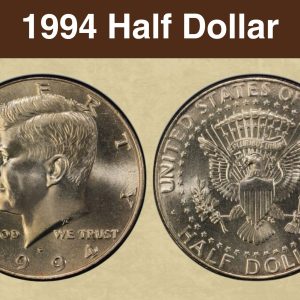
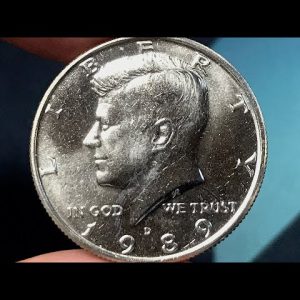
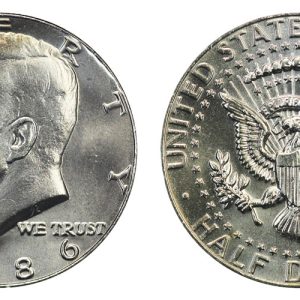
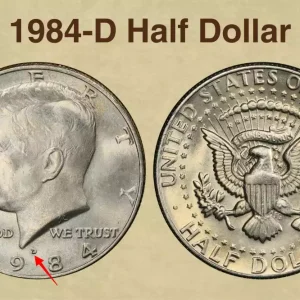
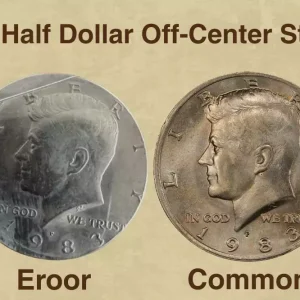
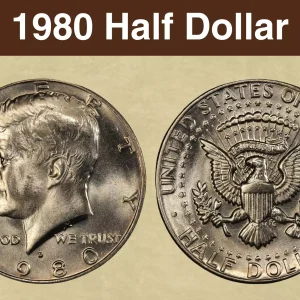
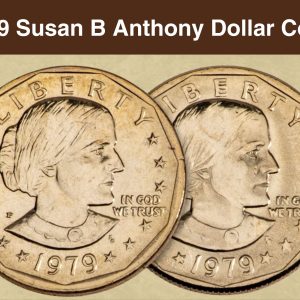
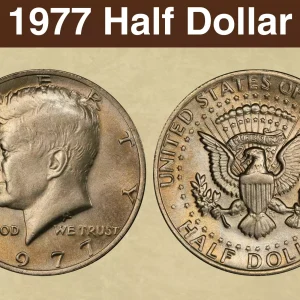
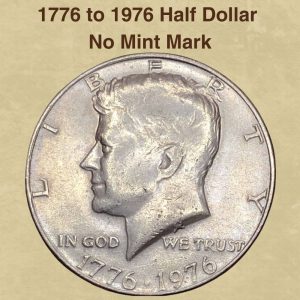
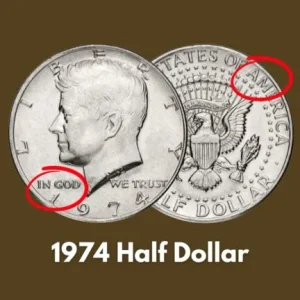
What is a 1959 half dollar worth today?
The value of a 1959 half dollar ranges from about $16 for a worn coin to several thousand dollars for a top-grade example or a rare proof version, with common uncirculated coins trading for around $20-$30. The price depends on the coin’s condition, whether it’s a regular or proof strike, and specific varieties like the “Full Bell Line” designation.
What is the hardest Franklin half dollar to find?
The early proof issues from 1950-1954 represent the most valuable regular-issue Franklin half dollars, with the 1950 proof commanding over $500 in Proof-65 condition. The low mintages—especially the 1950 proof with only 51,386 pieces—make these coins genuinely scarce.
Which Kennedy half dollars are worth money?
Kennedy half dollars that are worth money are generally 1964-dated coins, those with minting errors like double dies, or rare proof and Special Mint Set (SMS) versions from specific years. The highest-value coins often have special features, such as the “accented hair” variant on some 1964 examples, or a pristine grade like a PR70 or SP68. Coins minted after 1971, especially those with no mint mark, can also be valuable if they are in exceptional, uncirculated condition, notes this YouTube vi…
What are the key dates for Franklin Halves?
By mintages, the key dates in this series are the 1948, 1949-S, 1953 and 1955. Franklin half dollars have been extensively melted for their silver, and many dates are rarer than the mintage figures indicate.